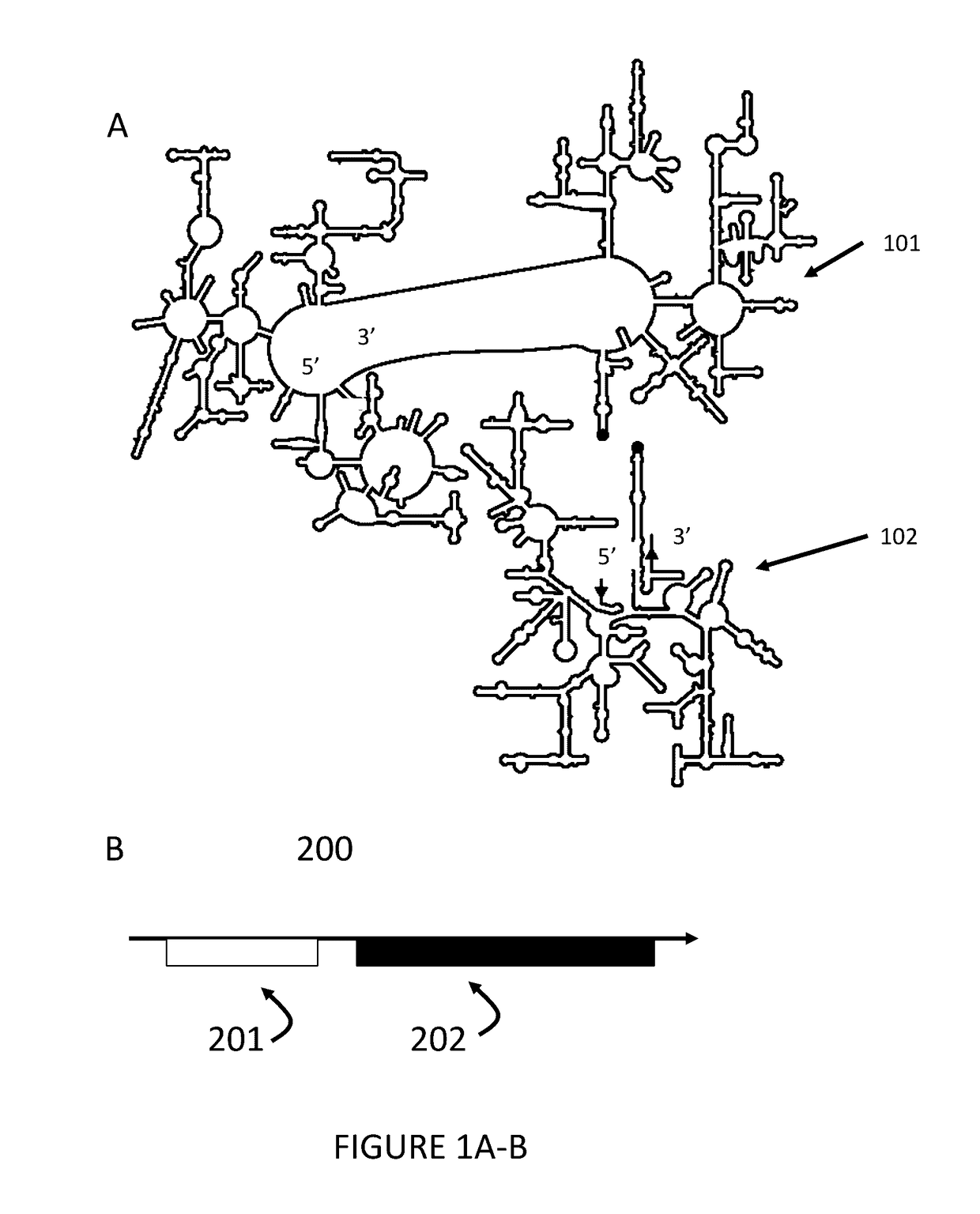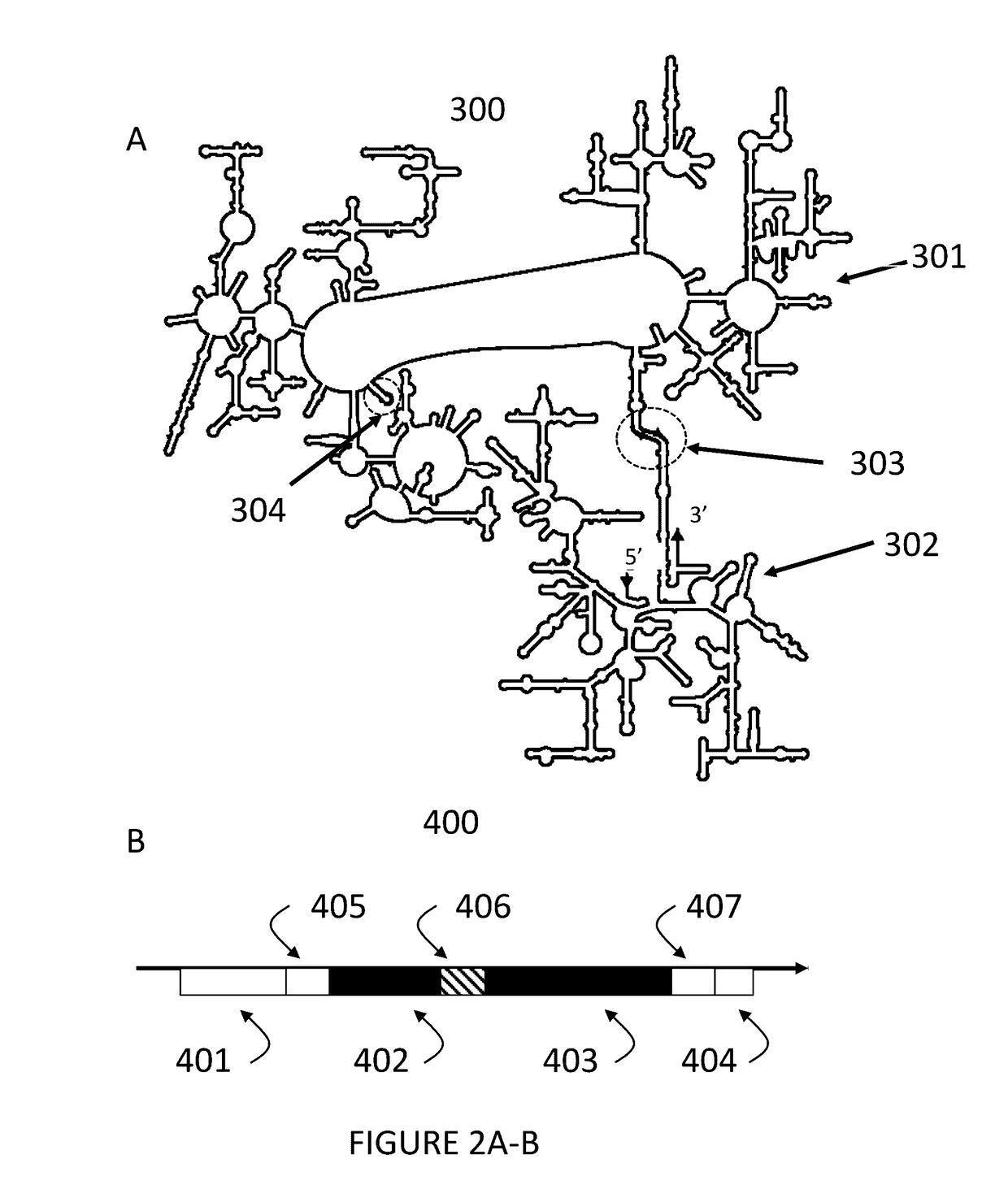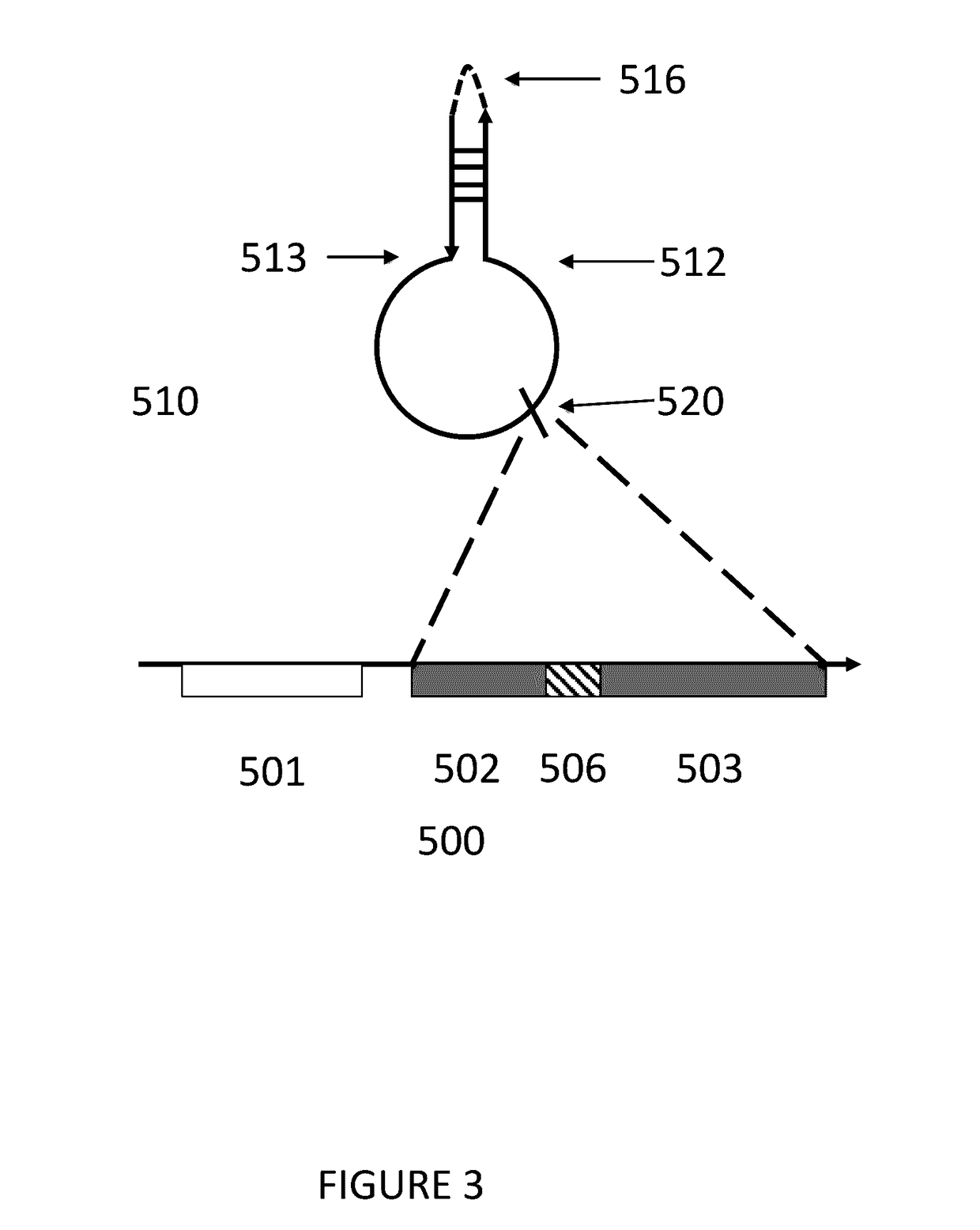Ribosomes with tethered subunits
a technology of ribosomes and subunits, applied in the field of engineered polynucleotides and engineered ribosomes, can solve the problems of limiting the development of specialized orthogonal genetic systems, limiting the engineering, and free exchange of subunits,
- Summary
- Abstract
- Description
- Claims
- Application Information
AI Technical Summary
Benefits of technology
Problems solved by technology
Method used
Image
Examples
embodiment 1
[0172]An engineered ribosome, the engineered ribosome comprising a small subunit, a large subunit, and a linking moiety, a. wherein the linking moiety tethers the small subunit with the large subunit and b. wherein the engineered ribosome is capable of supporting translation of a sequence defined polymer, and optionally where the linking moiety comprises a polynucleotide sequence selected from the sequences in FIG. 15 or 17.
embodiment 2
[0173]The engineered ribosome of embodiment 1, wherein the small subunit comprises rRNA, wherein the large subunit comprises rRNA, and wherein the linking moiety tethers the rRNA of the small subunit with the rRNA of the large subunit, and optionally where the linking moiety comprises a polynucleotide sequence selected from the sequences in FIG. 15 or 17.
embodiment 3
[0174]The engineered ribosome of embodiment 1 or 2, wherein the large subunit comprises a permuted variant of a 23S rRNA (e.g., a circularly permuted variant of 23 rRNA).
PUM
| Property | Measurement | Unit |
|---|---|---|
| volumes | aaaaa | aaaaa |
| concentrations | aaaaa | aaaaa |
| concentration | aaaaa | aaaaa |
Abstract
Description
Claims
Application Information
 Login to View More
Login to View More - R&D
- Intellectual Property
- Life Sciences
- Materials
- Tech Scout
- Unparalleled Data Quality
- Higher Quality Content
- 60% Fewer Hallucinations
Browse by: Latest US Patents, China's latest patents, Technical Efficacy Thesaurus, Application Domain, Technology Topic, Popular Technical Reports.
© 2025 PatSnap. All rights reserved.Legal|Privacy policy|Modern Slavery Act Transparency Statement|Sitemap|About US| Contact US: help@patsnap.com



